External oblique muscle
Table of Contents
Introduction of external oblique muscle:
The external oblique muscle is one of the outermost abdominal muscles, extending from the lower half of the ribs around and down to the pelvis. It is broad, thin & irregularly quadrilateral, its muscular portion occupying the side. Together, the external oblique muscles cover the sides of the abdominal area, being large & sitting on the top surface of the abdomen right below the subcutaneous fat & skin. Internal obliques are below the external obliques on each side of the trunk.
Origin of the External oblique muscle:
The muscle originates as eight fleshy slips from the outer surfaces of the middle of the shaft of the lower eight ribs. The muscle fibers run downwards, forwards & medially.
Insertion of the External oblique muscle:
The upper fibers of the muscle end into a broad aponeurosis through which they inserted from above downwards into the xiphoid process, linea alba, pubic symphysis, pubic crest & the pectineal line of the pubis & lower fibers of the muscle are inserted directly in the anterior 2/3 of the outer lip of the iliac crest.
Blood supply of external oblique muscle:
Upper 2/3 receives blood supply from branches of lower posterior intercostal & subcostal arteries
lower 1/3 from deep circumflex iliac artery.
Nerve supply of external oblique muscle:
Muscle supplied by lower 6 thoracic nerves.
The action of external oblique muscle:
The action of this muscle are:
- act for the support of abdominal viscera.
- helps in expulsive acts such as micturation, dafaecaton, parturition, vomiting,etc.
- helps in producing forceful expiration like in coughing, sneezing, blowing, shouting, etc.
- helps in trunk movement mainly trunk rotation.
Function of External oblique muscle:
Help rotate the trunk.
Bilateral contraction of External Oblique along with rectus abdominis & internal oblique flexes the trunk by drawing the pubis towards the xiphoid (like in crunches or sit-ups).
Stabilizing the core.
It helps to pull the chest as a whole, downwards, which compresses the abdominal cavity.
Assisting with forced expiration in breathing.
Assist with bending from side to side.
Clinical importance:
Pain in the side of the waist area, low abs & pelvis can be caused by the oblique muscles.
Pain can also occur in the following areas:
Groin area
Testicles
Bladder
Activities such rowing, raking leaves, chronic or persistent coughing, lifting heavy loads, using shovels or pitchforks & even sitting for long periods of time can bring on muscle pain in the external obliques.
Injury in the oblique muscles can also contribute to burning & discomfort in the urinary tract, bladder & can contribute to incontinence in some individuals.
An oblique muscle strain is most likely caused when the torso—the part of the body (trunk) excluding head & limbs—gets twisted or rotated badly.
Some common oblique muscle strain symptoms include:
A sudden, intense pain near the ribs
Pain in the abdomen
Stiffness, especially after waking up from sleep
Severe aching in the trunk
Muscle cramps
Soreness or swelling
Bruising
These symptoms can worsen if person try to take deep breaths, cough, or sneeze.
Exercise of External oblique muscle:
1.Side plank:
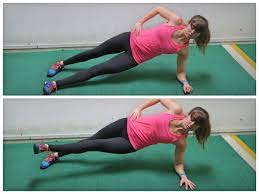
Lie on the left side with the right leg stacked on top of the left leg, & left forearm on the ground with the elbow underneath your shoulder. Brace the core & push off the ground so the body is being supported by the left arm & foot, the body should form a straight line from head to feet that makes around a 45-degree angle with the ground. Raise the right arm up toward the ceiling without letting the hips dip.
In initial stage person can keep knees on the ground in a slightly bent position. To make it more advanced, lift the right leg up & down while holding the side plank, keeping the rest of the body in that straight line from head to feet. Hold a light dumbbell in the right hand to make it more challenging. Repeat on the other side.
2.Standing Trunk Rotation:
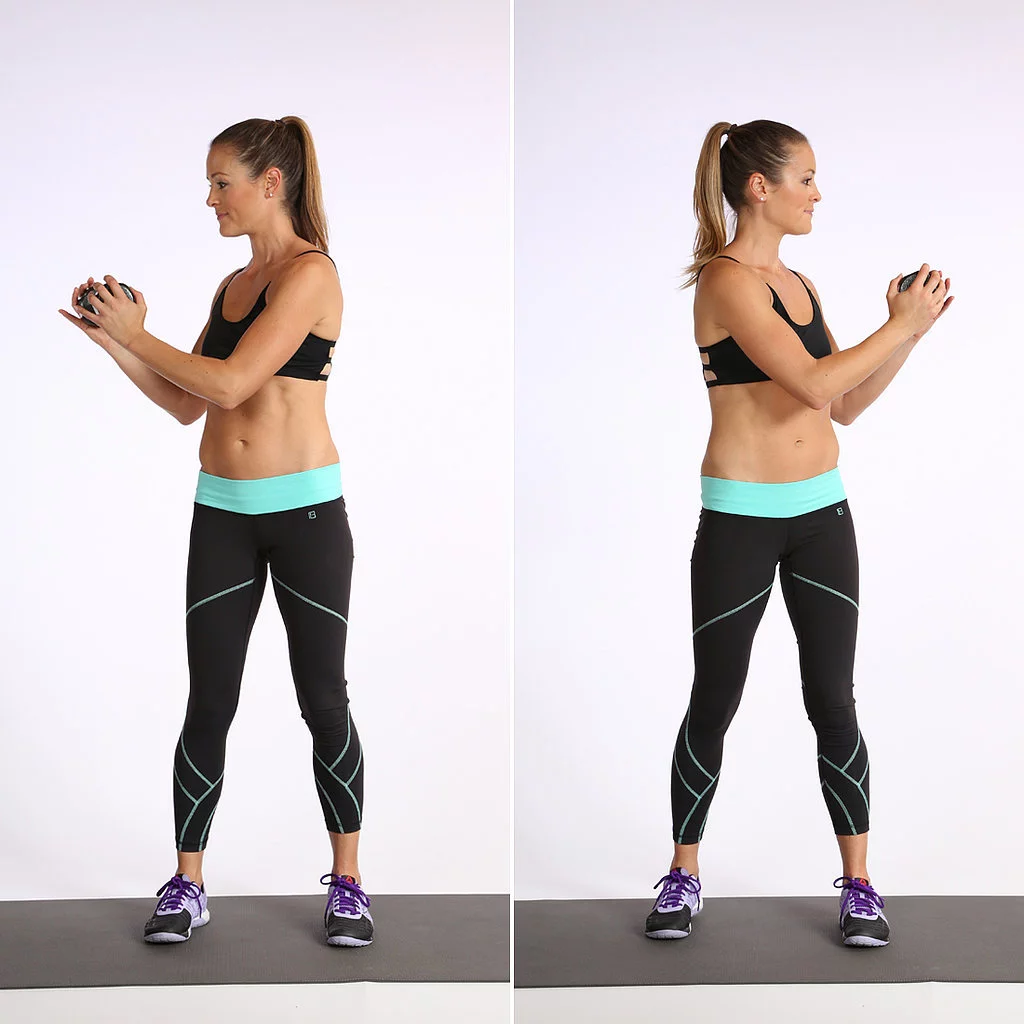
Stand with the feet hip-width apart & hold a medicine ball between the hands in front of the chest. Keeping the core tight, arms bent at right angles at the elbows, & the elbows hugging the sides, rotate the torso slowly to the right, keeping head & chest rotating along with it. Hold the twist briefly before rotating to the left.
3.Russian Twist:
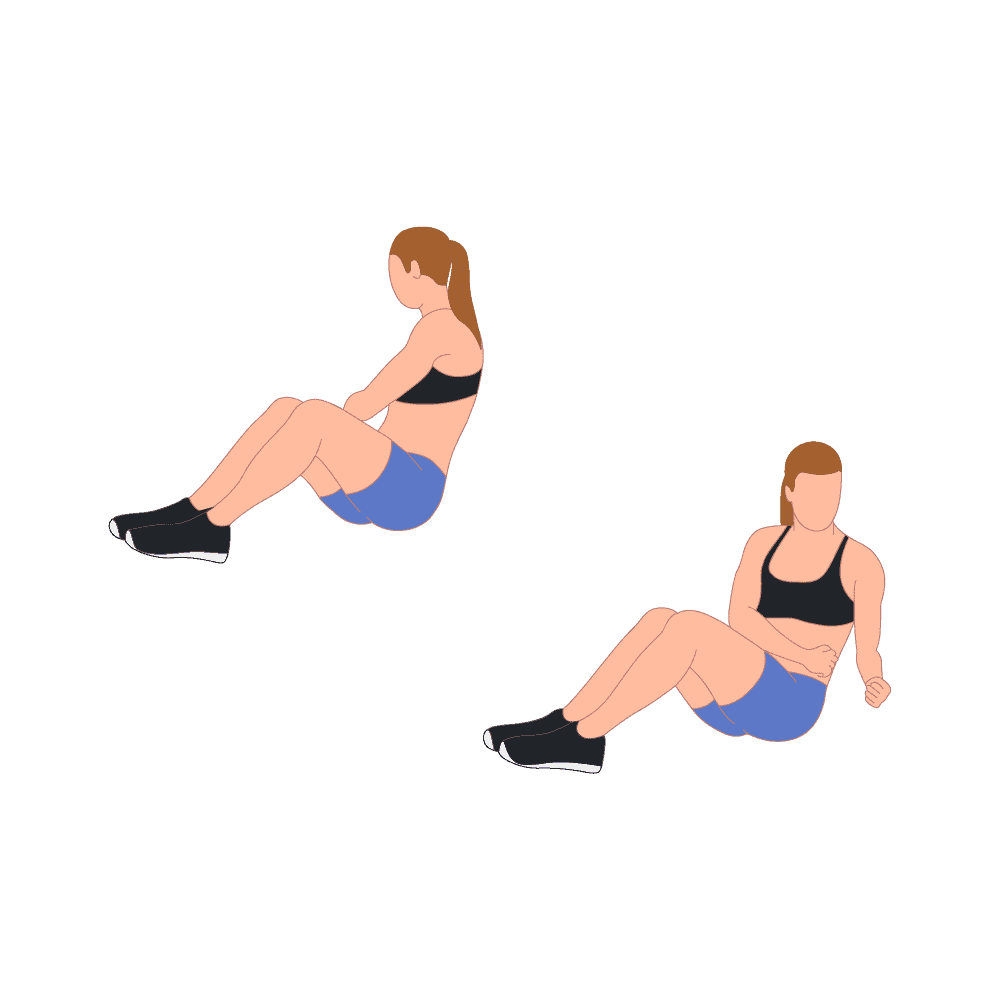
Sit on a mat with the feet on the ground & legs slightly bent in front of you. Activate the core as you lean back so the torso & thighs form a V shape & lift your feet slightly off the ground (cross the ankles to make more challenging). Hold the arms straight out in front of you, then twist the torso to one side in a controlled motion, tapping the floor before rotating to the other side & repeating. Hold a dumbbell or medicine ball with bent elbows in front of the chest as the twist to make the move more challenging.
4.Dead bug:
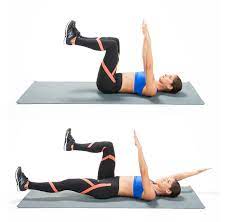
Lie on the back with the arms extended up toward the ceiling. Bend the knees so shins & thighs form a 90-degree angle (shins should be parallel to the floor). Engage the core & lower the right arm straight back behind you at the same time you extend the left leg out long in front of you, lowering it so it hovers just above the ground. Return them to the center & repeat on the opposite side. To increase the challenge, hold light dumbbells in each hand as you complete the move.
FAQs
The direction of rotation of the spine can be addressed via biomechanics. The internal oblique rotates to the same side as the external oblique, which rotates to the opposite side. They collaborate.
The external obliques are two broad, slender muscles that cross each side of the abdomen. Because they are one of the most superficial (external) abdominal muscles and because they travel diagonally (obliquely) down each side of the body, these muscles get their name.
They have a mostly rectangular shape, with the long axis extending along the linea alba from anterior to posterior. The external obliques’ muscle fibers traverse medially and inferiorly over the lateral sides of the abdomen from their origins to their insertions until coming to a stop just lateral to the rectus abdominis muscles.
The external obliques muscle are two muscles that lie on each side of the rectus abdominis muscle. They are the bottom of the stack and the biggest of the flat muscles. They move from your body’s sides toward the center. The external oblique muscle enables side-to-side trunk movement.
The external abdominal oblique, in particular when it contracts unilaterally, causes the trunk to rotate and bend to the opposite side. Anterior trunk flexion caused by bilateral contraction raises intra-abdominal pressure, which is beneficial for actions like breathing, singing, and defecation.

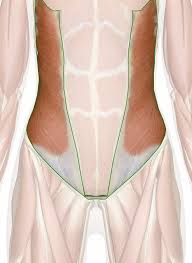
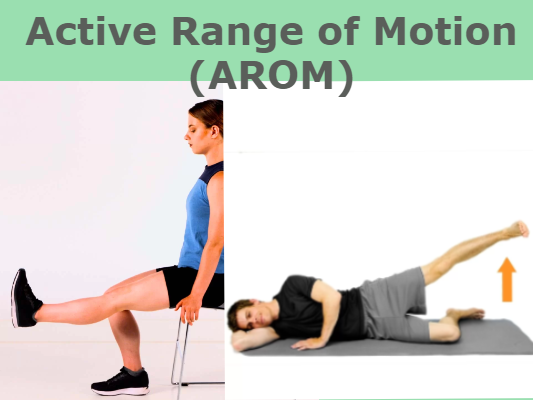
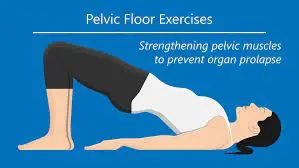

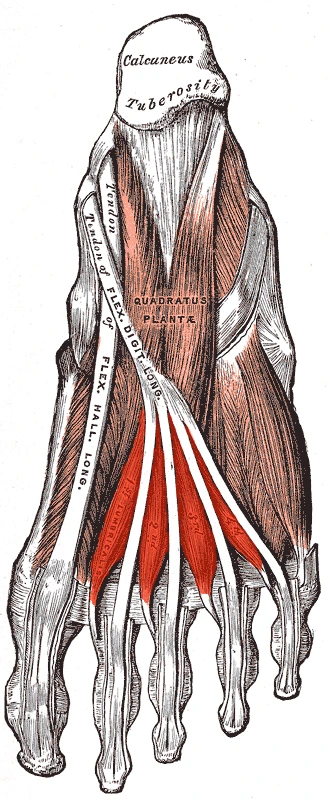

One Comment